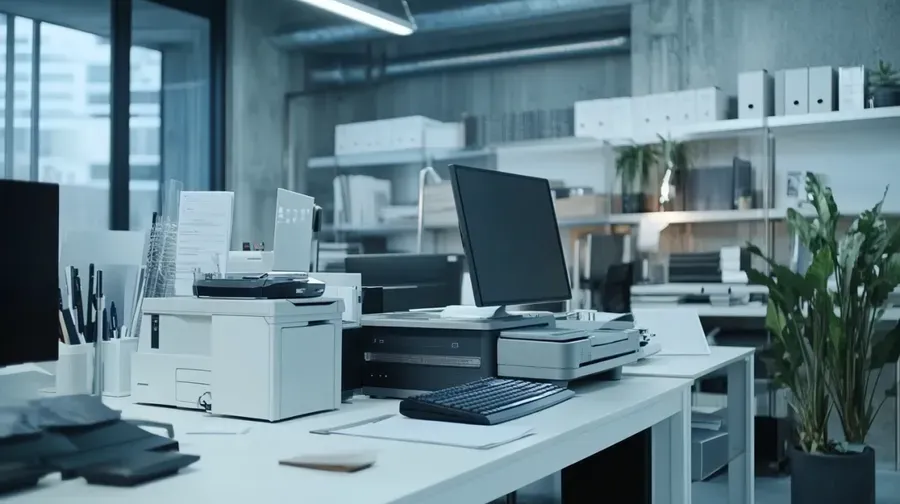Are Sustainable Printing Practices and Modern Office Technologies Compatible?

Today, most (modern) offices run on tech (e.g., cloud printers, wireless networks, smart devices, software that keeps track of every move, etc.). At the same time, there’s more pressure than ever to go green.
But when your office runs on high-speed systems and nonstop output, how realistic is it to talk about sustainability?
In the past, this question has often been ignored, but today, it has become practically impossible to ignore. Businesses are being pushed/forced to reduce waste, use less energy, and make ‘greener’ eco-friendly choices. But, in order to address the issue, they also need speed, flexibility, and tools that can keep up with modern demands.
But sustainable printing has come a long way, and there’s far more to it than just using recycled paper or printing less. Now, it’s about smarter machines, better materials, and systems that work with your office tech, not against it.
How to Integrate Sustainability into High-Tech Printing Practices
There’s no reason for modern offices to give up their tech to be sustainable when they just need to make smarter choices about how they print. A lot of new printers are built to be energy-efficient. They have features like Energy Star certification, automatic sleep modes, and faster warm-up times to reduce the amount of power they use without slowing anything down.
There’s also been a shift toward refillable toner systems and cartridge recycling programs that cut down on plastic waste and lower costs over time. There are even some companies that are turning to waterless printing and low-emission devices to reduce their environmental footprint even more.
In terms of software, we now have smart monitoring tools that track printing habits across the office and give real-time info on how much is being printed, by whom, and when. All these data points make it a lot easier to spot waste and cut back. Automatic rules, such as defaulting to double-sided printing or limiting the use of colors, can easily be implemented.
The whole point of this isn’t to micromanage every aspect of your business (especially your staff), but to encourage sustainable behavior. Lead by example.
This can be done even in more specialized areas of print production, like those a lenticular printing company would handle.
5 Sustainable Office Printing Strategies
It might seem like creating a greener office will require a complete overhaul, which isn’t very practical (or attractive). The good news is – that’s not the case. A greener office just means that you’re making a few smart shifts in how your team handles printing.
Here’s what can make a real difference.
1. Choose the Right Equipment
The starting point of sustainable printing is the machines themselves. Offices should invest in multi-functional printers that handle printing, scanning, and copying in one single unit. This won’t just save space (although that’s a nice perk), but it’ll also use far less energy compared to running several separate devices.
Look for models that are certified by programs like EPEAT or Blue Angel.
2. Transition to Cloud and Digital Workflows
You don’t need to print everything. If you move some of your office workflows to the cloud, you’ll need to print less. Digital documents are easier to store, share, and secure – especially if you combine this with tools like electronic signatures and collaborative editing platforms.
But even when printing can’t be avoided, cloud-based systems are still good to have. Secure cloud printing lets employees release jobs only when they’re at the printer, which means there will be fewer unclaimed or forgotten documents.
3. Partner with Green Vendors
Suppliers play a big role in any office’s environmental impact. Vendors who use recycled paper, biodegradable packaging, and non-toxic ink are the way to go. If you’re unsure if your supplier follows these principles, then you can simply ask whether they follow third-party sustainability standards, and you can also check for any certifications (e.g., FCS, other recognized eco labels).
4. Monitor/Optimize
If you don’t measure something, it’s really hard to make improvements. That’s simply due to the lack of information, which hinders you from forming an effective strategy. That’s why it’s so important to track your office’s printing habits. A lot of printers and print management tools have built-in analytics that show how much each department or employee is printing.
This lets you see problem areas; there might be too much color printing or single-page jobs sent to high-volume machines. Once you see where the waste is happening, you can fine-tune your settings and policies.
5. Train Your Staff
You could have the best equipment and the most refined policies, and you still won’t do much if your team isn’t on board. Staff have to know why sustainability matters and how they can help. Remind them regularly of eco-friendly practices and encourage habits like defaulting to double-sided printing or using grayscale.
Conclusion
For people who are striving towards a greener planet, when it comes to the tech sector usually don’t pay much attention to printing (if any at all).
But it should. Because once you realize how many easy wins there are, you start to see that printing is where sustainability and technology could go hand in hand.










